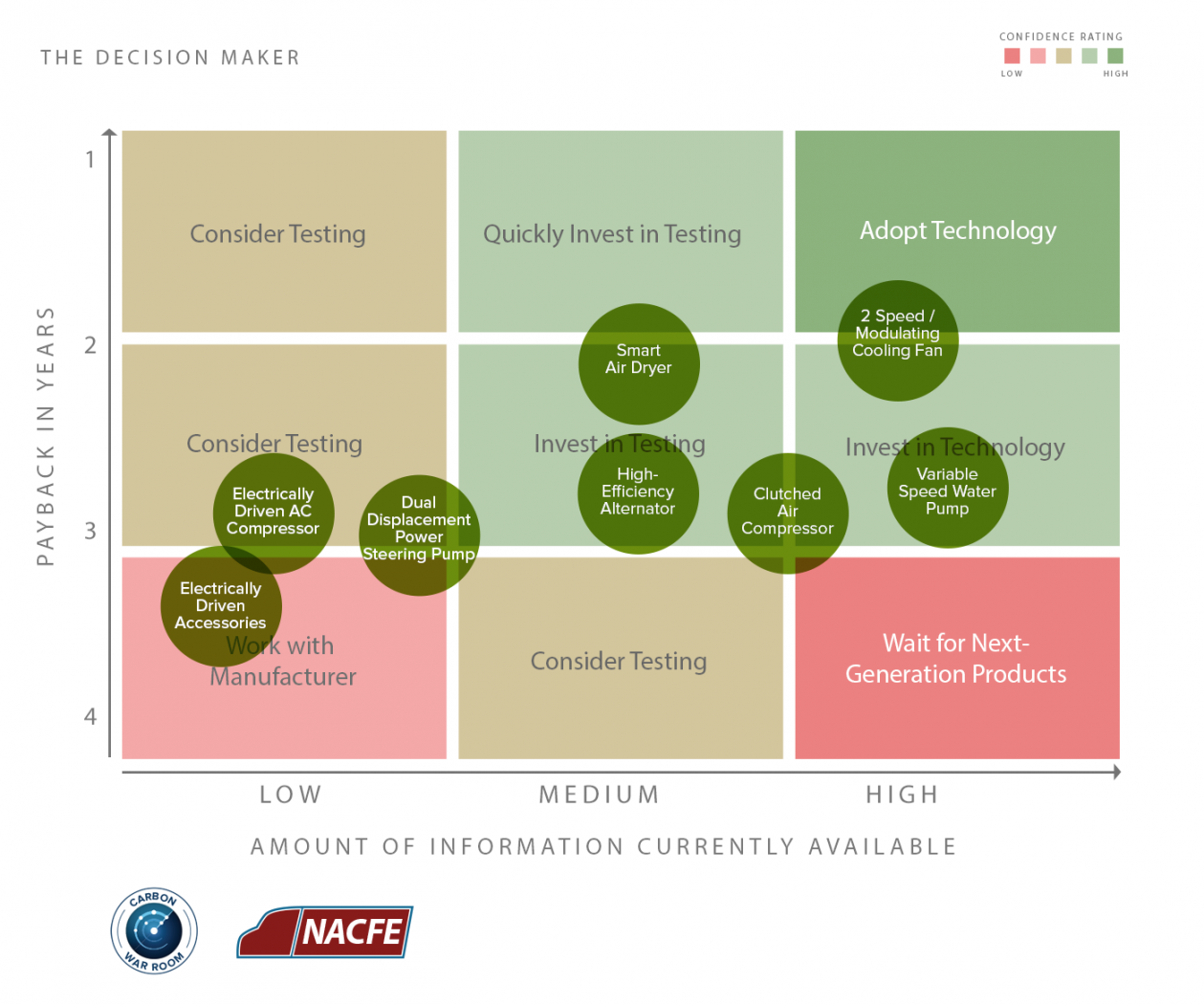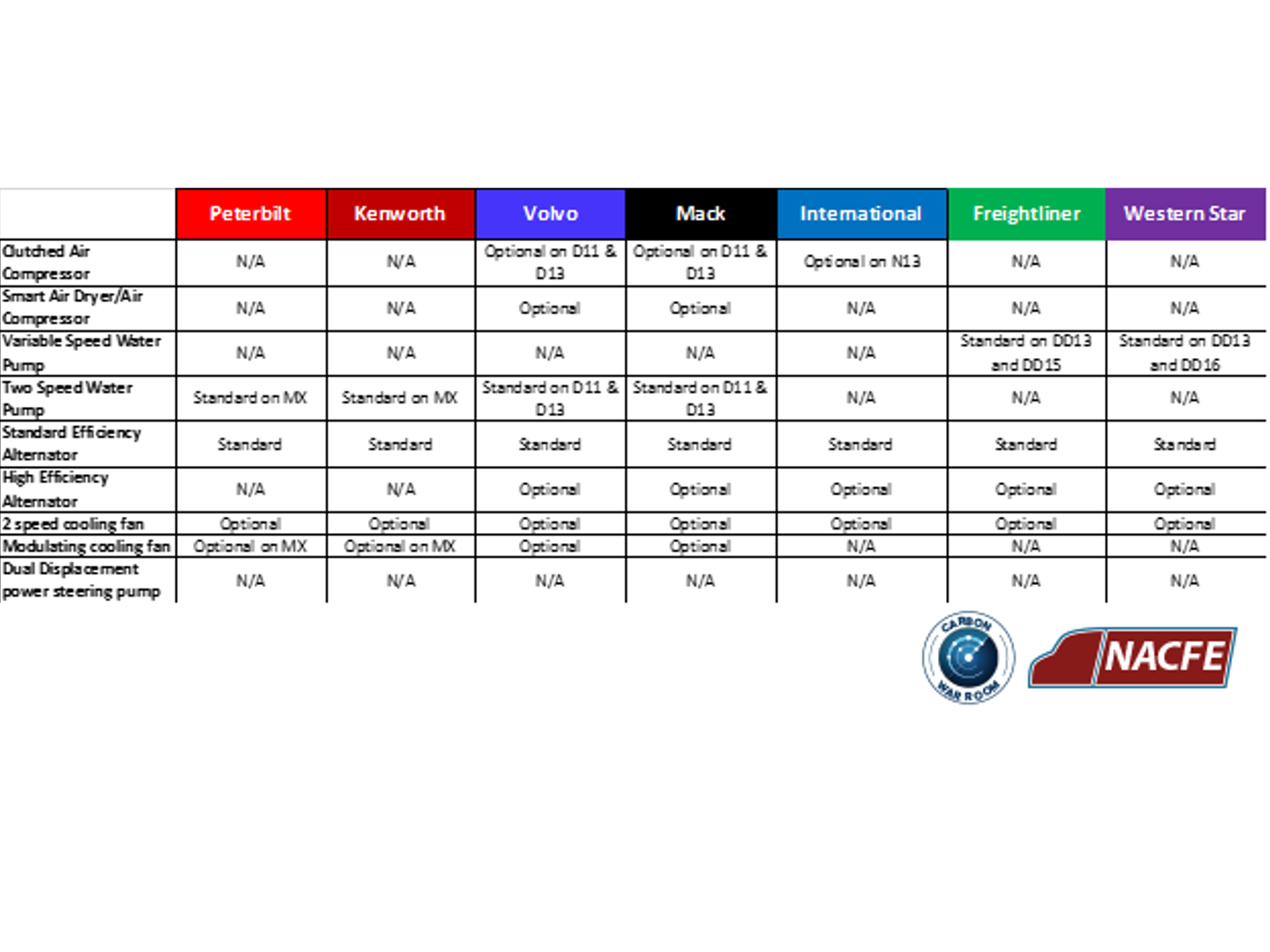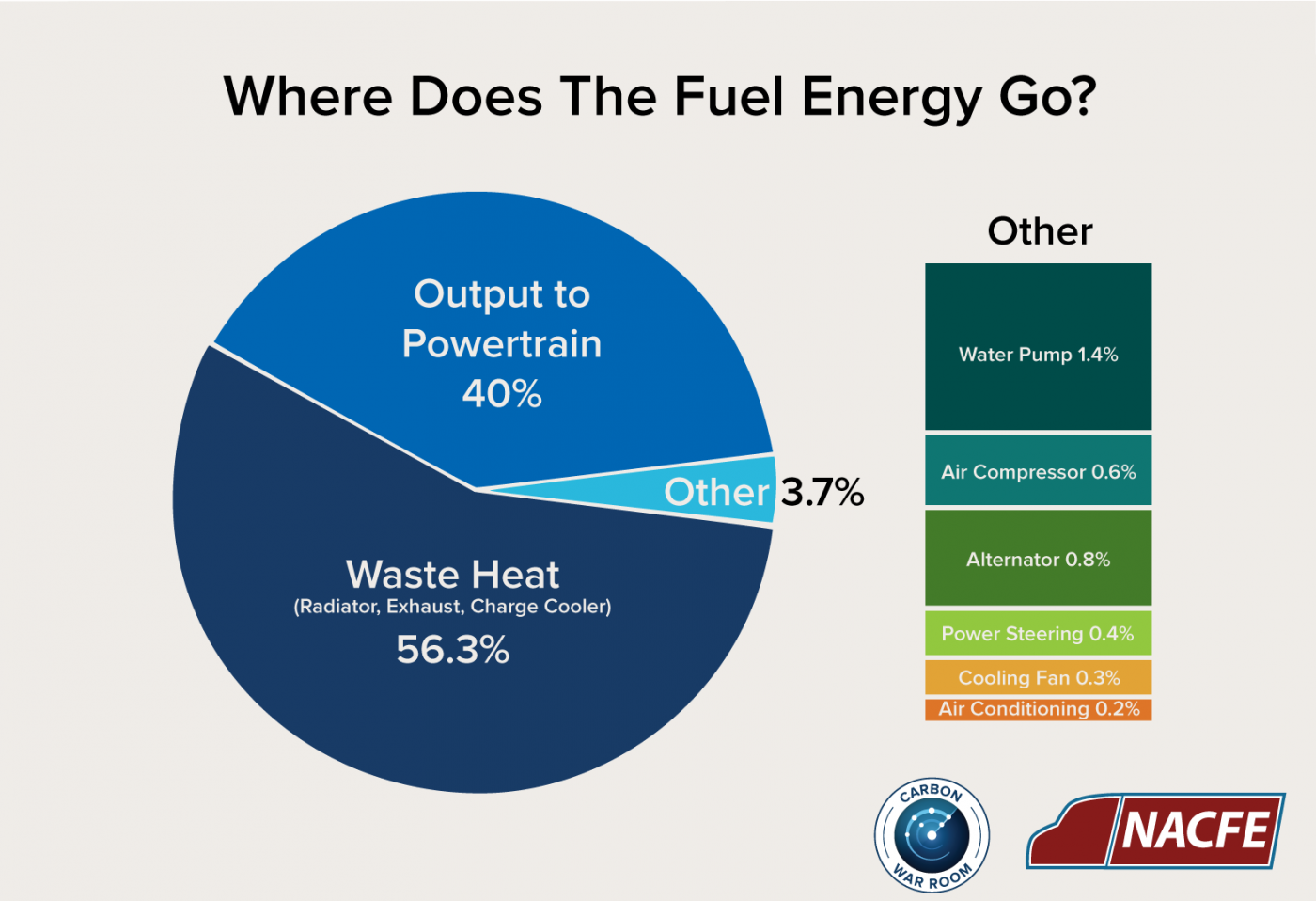Electrically Driven Accessories
Most accessories are either gear or belt driven by the engine; future components may be removed from the engine entirely If the electrical system can support their large energy requirements.

Benefits
Fuel Savings
If coupled with higher capacity and high voltage electric systems, there will be modest fuel savings.
Challenges
Not Available for Most Vehicles as of March 2017
Increased Complexity of Electrical System
Higher Electrical System Voltage and Power Output Required
Electrically driven accessories will add to the electric load on the vehicle.
Reliability Concerns
Increased Maintenance Costs
What People Are Saying
SuperTrucks
From 2009 to 2015, the Department of Energy sponsored a program with industry manufacturers to demonstrate at least a 50% improvement in freight efficiency. The project leads were Daimler, Cummins/Peterbilt, Volvo Trucks USA, and Navistar. Each of the four teams created demonstration vehicles incorporating a variety of new technologies to highlight the feasibility of meeting this aggressive goal.
As part of researching this subject, the NACFE study team interviewed each SuperTruck team to understand its analysis and choices relative to variable engine-driven accessories. It is important to note that most of the fuel economy and freight efficiency gains were achieved through improvements in aerodynamics, weight reduction, rolling resistance reduction, and powertrain improvements.
Note that all four teams chose to implement a form of waste heat recovery as part of their technology choices. The fuel economy gains for this technology are far higher than those available through improvements in accessory systems.
Fleets
On reliability: “The past few years have given us a lot of new challenges to manage due to the introduction of less-than-reliable new technology like aftertreatment systems or electric APUs. When it comes to accessories technology improvements, the new equipment must be proven reliable before I’ll be willing to implement it in my fleet across the board.”
On payback: “Any optional new technology that we implement must meet return on investment guidelines before it will be considered as part of a large purchase. Given that the fuel economy savings from new accessories are generally small, this makes measuring the potential improvement from anything new very difficult for us. This means it’s a harder sell to our management to make the investment
Decision-Making Tools
The study team developed several tools to help fleets in making their decision about electronically -driven components. The Confidence Matrix is designed to inform fleets of the study team’s confidence in the technology being studied vs. the payback the fleet should expect to receive from the technology. Technologies in the top right of the matrix have a short payback, usually thanks to their low upfront cost, and moreover are found to have enough performance data that fleets can be highly confident in those short payback times, usually because the technology is more mature or otherwise has a more substantial track record of results.



Conclusions
- Fuel economy gains from currently available variable engine-driven accessory technologies are modest.
- The payback for these devices is extended based on today’s fuel prices.
- Duty cycle of each accessory is critical to the ROI calculation.
- There is a significant concern for subsystem reliability of these new variable engine-driven accessory technologies.
- Payback of many of the new accessory technologies is currently insufficient to result in high levels of adoption.
- Future enabling technologies like higher vehicle system voltage, increased energy storage, and waste heat recovery will likely improve ROI of new variable engine-driven accessories.